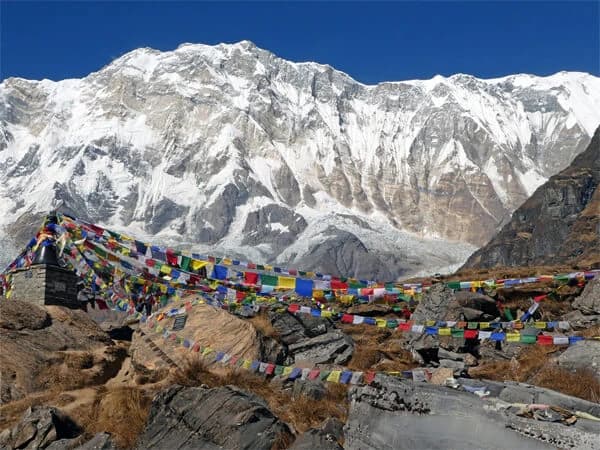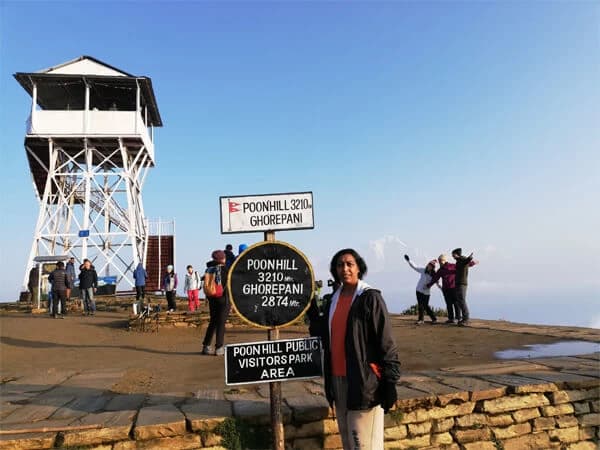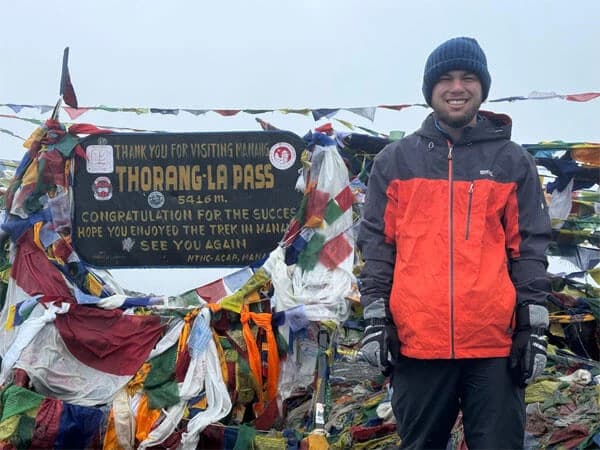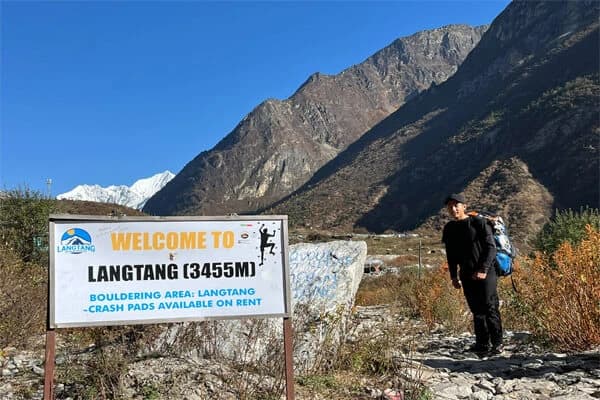Uncover the world renowned Annapurna Trekking Trail where majestic Himalaya peak, diverse landscapes, and authentic Nepal culture await.From lush rhododendron forests to high alpine passes, this trail offers an unforgettable journey through the heart of the Himalayas.Perfect for adventure seekers, nature lovers, and cultural explorers alike. Start your Annapurna trek today and discover why it's one of the best trekking destinations in Nepal.
Annapurna Trekking Trail: Guide To Trekkers Heaven
The Annapurna Trekking Trail in Nepal is one of the most popular and well-known trekking destinations in the world. It offers trekkers an incredible experience with stunning views of the Himalayas, traditional Nepalese culture, and the chance to trek through diverse landscapes. Here's a guide to help you plan your trek on the Annapurna Trekking Trail:
- Trekking Seasons: The best season for Annapurna Trekking Trail is from September to November and from March to May. During these months, the weather is stable, and the skies are clear, providing excellent views of the mountains.
- Permits: To trek in the Annapurna Trekking Trail, you'll need two permits: Annapurna Conservation Area Permit (ACAP) and Trekker's Information Management System (TIMS) card. You can obtain these permits at the Nepal Tourism Board in Kathmandu or Pokhara.
- Trekking Routes: There are several trekking routes on the Annapurna Trekking Trail. The most popular are the Annapurna Circuit Trek and the Annapurna Base Camp Trek. The Annapurna Circuit Trek is a longer route, taking about 20 days to complete, while the Annapurna Base Camp Trek takes about 12 days.
- Altitude Sickness: Trekking at high altitudes can cause altitude sickness. It's important to acclimatize properly and to take the necessary precautions to avoid altitude sickness. This includes drinking plenty of water, avoiding alcohol, and taking breaks to rest.
- Accommodation: There are several teahouses along the Annapurna Trekking Trail that offer basic accommodation and meals. You can also bring your tent and camp along the way if you prefer.
- Physical Fitness: Trekking in the Annapurna Trekking Trail is a challenging experience that requires a good level of physical fitness. It's recommended to do some training and preparation before embarking on the trek.
- Guided Trek: It's recommended to hire a guide or porter for the Annapurna Trekking Trail. A guide can provide valuable information about the trek, help with navigation, and ensure your safety.
- Essential Gear: Some essential gear to bring for the Annapurna Trekking Trail includes a sturdy pair of trekking boots, warm clothing, a sleeping bag, a first aid kit, and a good quality backpack.
The Annapurna Trekking Trail is a truly magical experience that offers trekkers a chance to explore the stunning beauty of the Himalayas and the traditional Nepalese culture. With proper preparation and planning, you can have an unforgettable adventure on this trekking trail.
Annapurna Trekking A Spectacular Nature Experience
Indeed, the Annapurna Trekking Trail is a spectacular nature experience that offers trekkers breathtaking views of the Himalayas, diverse landscapes, and the opportunity to immerse themselves in Nepalese culture. Here are some of the highlights of the Annapurna Trekking Trail:
- Himalayan Views: The Annapurna Trekking Trail offers stunning views of the Himalayas, including Annapurna, Dhaulagiri, and Machhapuchhre. Trekkers can enjoy these breathtaking views from various viewpoints along the trail.
- Diverse Landscapes: The trail passes through diverse landscapes, including lush forests, rugged mountains, and barren high-altitude deserts. Trekkers can experience a range of ecosystems and environments as they trek through the trail.
- Traditional Nepalese Culture: The Annapurna Trekking Trail also provides an opportunity to immerse yourself in traditional Nepalese culture. Trekkers can visit local villages and interact with the friendly locals, learning about their customs, traditions, and way of life.
- Natural Hot Springs: After a long day of trekking, trekkers can relax in the natural hot springs that are found along the trail. These hot springs are a great way to soothe sore muscles and unwind after a challenging day of trekking.
- Wildlife: The Annapurna Trekking Trail is home to a variety of wildlife, including Himalayan tahr, snow leopard, musk deer, and various bird species. Trekkers can keep an eye out for these animals as they trek through the trail.
Overall, the Annapurna circuit Trekking Trail is a must-visit destination for nature lovers and adventure seekers. With its stunning natural beauty, diverse landscapes, and rich culture, it offers an unforgettable experience that will stay with you for a lifetime.
What are some of the best things about taking a nature hike through this stunning region of Nepal's Himalayas?
The Annapurna trekking trail is a popular hiking route in Nepal's Himalayas. The trip takes around 8 weeks on average, but it may be done much faster depending on who you travel with and how swiftly you go. It is also feasible to complete the trek in a little less time by taking buses between towns rather than walking. However, this isn't as popular as it once was.
The Annapurna Trek begins in Pokhara and gradually climbs north through several communities before reaching Manang. The trek north from Lhasa eventually leads to the Tibetan Plateau and, ultimately, to Mount Everest base camp. Then it loops back around and reaches Pokhara.
The Annapurna trek is an excellent way to see the Himalayas and learn about Nepalese culture. It is also one of the world's most demanding treks, so be prepared for a lengthy and difficult walk. However, the benefits are worth it, and you will never forget your trip through the world's highest mountains.
What is the gear needed for the Annapurna trekking trail?
Are you preparing to go on an Annapurna trek? Here is a list of equipment you'll need, as well as cost estimates for each item. Your clothing is the most essential item of gear, naturally. Hiking boots, woolen socks, a warm jacket, a hat or scarf, and gloves are all required.
Boots, a coat, and socks set you back about $200-$300 for a decent pair; about $100-$150 for a warm jacket; and around $50-$75 for socks, a hat, and gloves. A sleeping bag, a tent, a stove, and cookware are all necessary items. Costs for these goods vary based on the manufacturer and grade.
However, if you're prepared for some cold weather camping and willing to invest a little more money into your gear, it may be worth your while. Expect to pay around $250-$350 for a decent sleeping bag, $200-$300 for a good tent, and $100-$150 for a stove and cookware.
Finally, you'll want to bring some miscellaneous items, such as a flashlight, a first-aid kit, and a map. You may spend anywhere from $50 to $100 for a decent flashlight, between $30 and $50 for a good first-aid kit, and between $20 and $30 for a decent map.
In all, a trip to the Annapurna region may cost you around $1000-$1500 in equipment. Naturally, costs can vary considerably based on the brands and quality of the equipment you select. But it should give you a general idea of what you'll require and how much it will set you back.
What things should be considered for the trekkers coming to the Annapurna trekking trail for the first time?
If you're visiting Annapurna for the first time, there are a few things you'll need to do ahead of time. We'll go through five important stages that you should take in order to have a safe and successful excursion. While every trekker's requirements are different, these suggestions are beneficial for all first-time Annapurna climbers.
Choose the right trekking company
The first and most crucial step in preparing for your Annapurna excursion is to pick a trustworthy and reliable trekking company in Nepal. There are many trekking companies in Nepal, who offer different trekking package and tour package around the Annapurna regions
For your assistance, we would like to make your first trekking excursion more pleasurable. Our firm offers you finest trekking in Nepal, Peak climbing, & Tour in Nepal. We have amazing offers and packages regarding the Annapurna trek and Everest trek.
Getting the travel insurance
Another important step in planning for a trek to Annapurna is to get travel insurance. This will safeguard you if something goes wrong on your trip, such as becoming ill or being injured. Make sure you fully understand your policy's limitations and exclusions.
Pack the right gear
One of the most essential preparations for your Annapurna trip is to ensure that you bring the appropriate equipment. This includes everything from clothing and boots to trekking poles and a first-aid kit. To save weight, make sure you pack light since you will be carrying your own belongings on the journey.
Train Your Body
One of the most essential preparations for a trip to Annapurna is to prepare your body for the physical challenges it will encounter. Cardio and strength training are both required, as you will be doing a lot of walking and climbing on your trek. To let your body time adjust, start training several months beforehand
Stay Hydrated
Finally, one of the most crucial things to do leading up to your Annapurna trek is to stay hydrated. This means drinking plenty of water and avoiding alcohol in the weeks leading up to your trip. It's also a good idea to bring some electrolyte powder or tablets with you in case you run out.
Following these five guidelines can help you be well prepared for your Annapurna journey. Keep in mind to plan ahead of time and to pack lightly, since this will make your trip much more pleasurable.

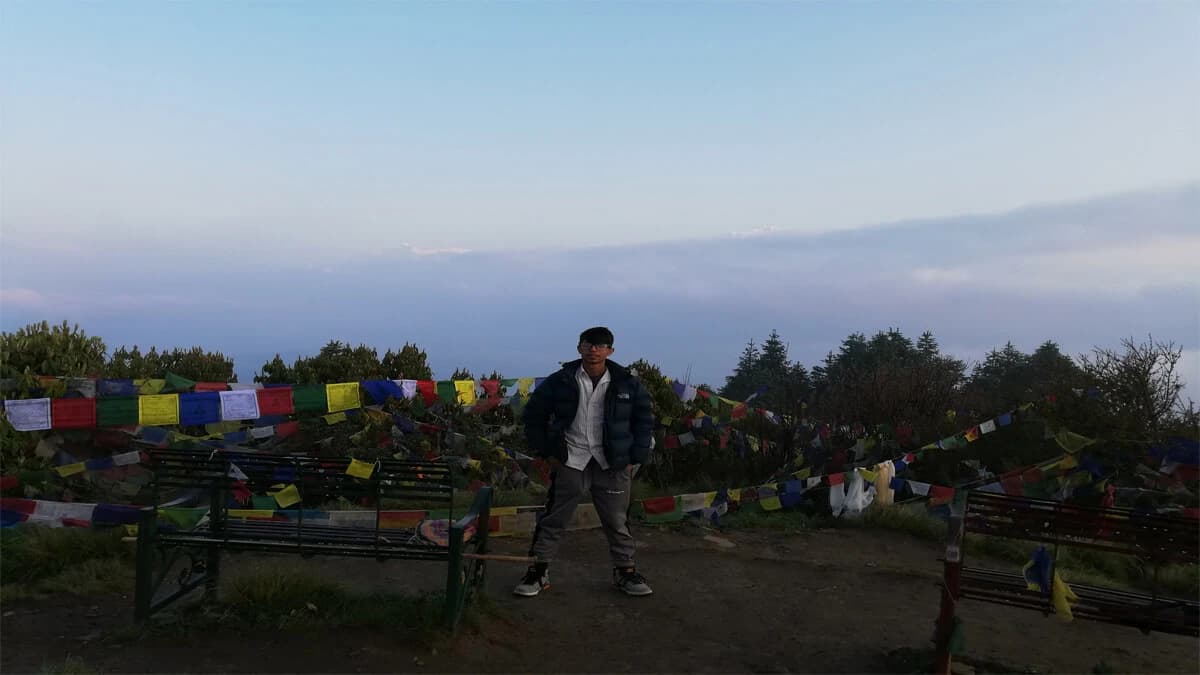
.webp&w=1200&q=75&dpl=dpl_4U3CaZUV3Y5iKdBNPJmVMATJy3AB)
